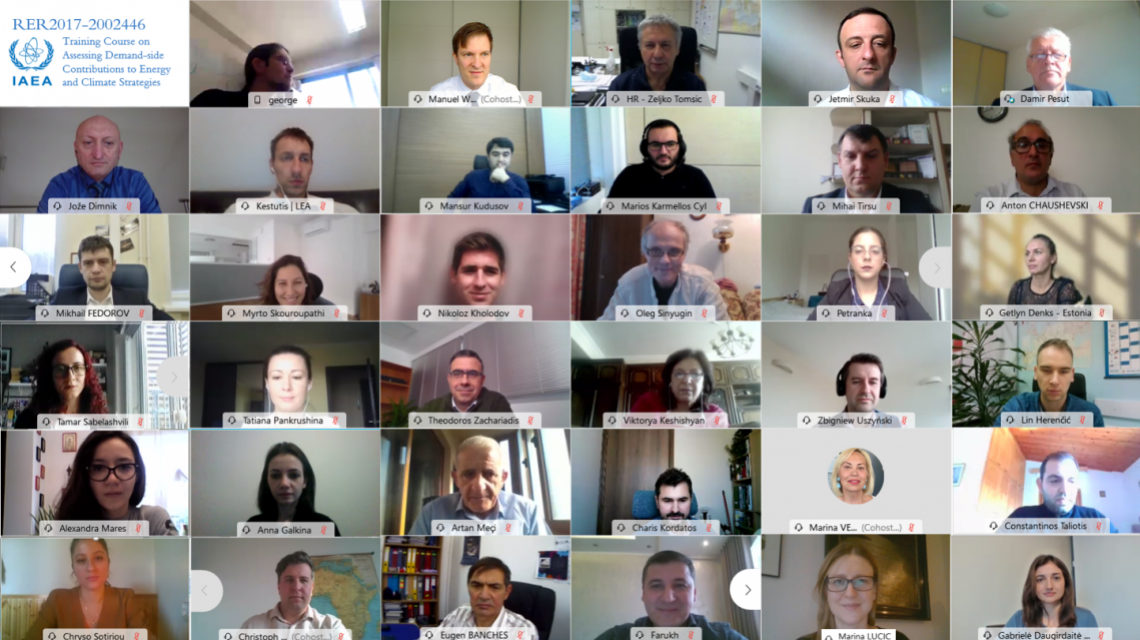To ensure the global average temperature at the end of the century does not exceed 2°C above pre-industrial levels, members of the Paris Agreement are exploring diverse technological and regulatory options to limit carbon emissions. While moving away from the use of fossil fuels is key, measures related to energy demand can play a major role, as well. “Energy demand is a substantial ingredient of decarbonization strategies, but energy end-use sectors are very diverse and difficult to address,” explains Theodoros Zachariadis, Associate Professor at the Cyprus Institute. Accurate modelling of national energy needs is essential for government planning.
As part of its suite of energy-related support, the IAEA offers assistance in energy planning for sustainable development, providing methodologies, energy modelling tools and associated training. The IAEA hosted a virtual training course, with the support of the Cyprus Institute, in November 2020.
The course aimed to help countries in Europe and Central Asia to assess their national energy needs and to better understand how those needs may be affected by policy measures, industry practices, behavioural incentives and emissions targets. The two-week technical cooperation (TC) activity[1] equipped energy and climate specialists with the tools and capacities needed to evaluate, prioritize and communicate measures designed to reduce energy demand related greenhouse gas emissions.
"Events such as these are most beneficial for participants like me,” said Petranka Boncheva, a North Macedonian energy expert. “They allow for an exchange of experiences in the measures used by a particular country or region to reduce emissions, such as high-efficiency appliances, rational-use policies or fuel substitution.”








